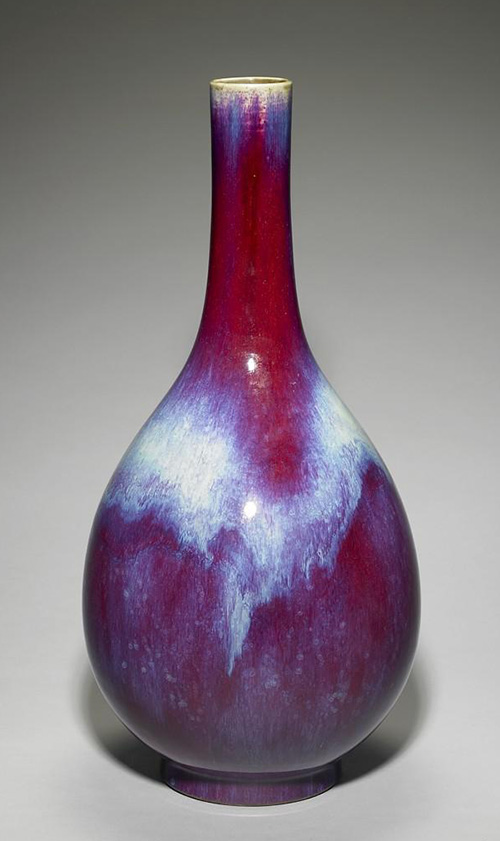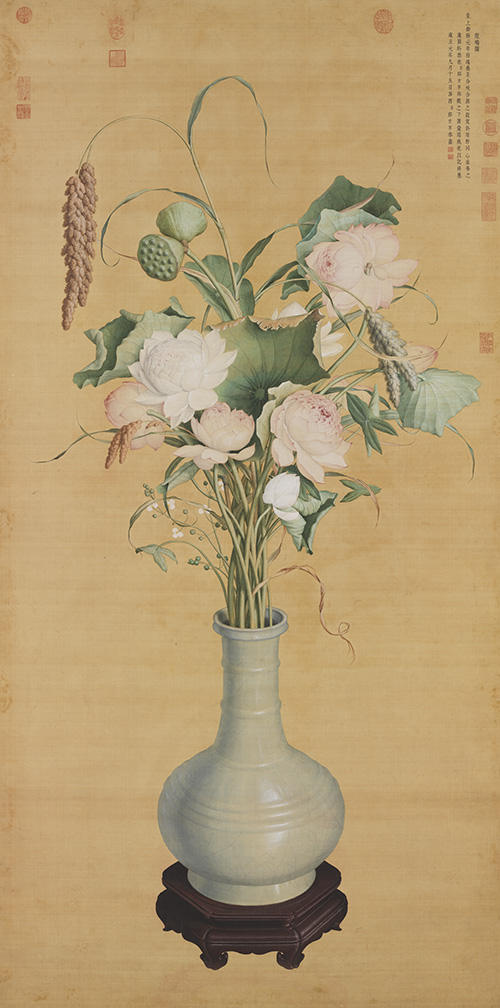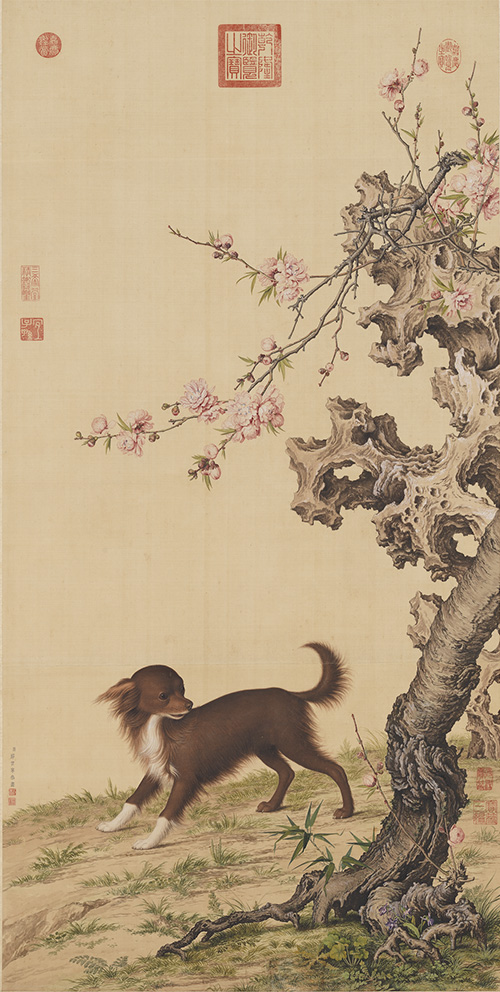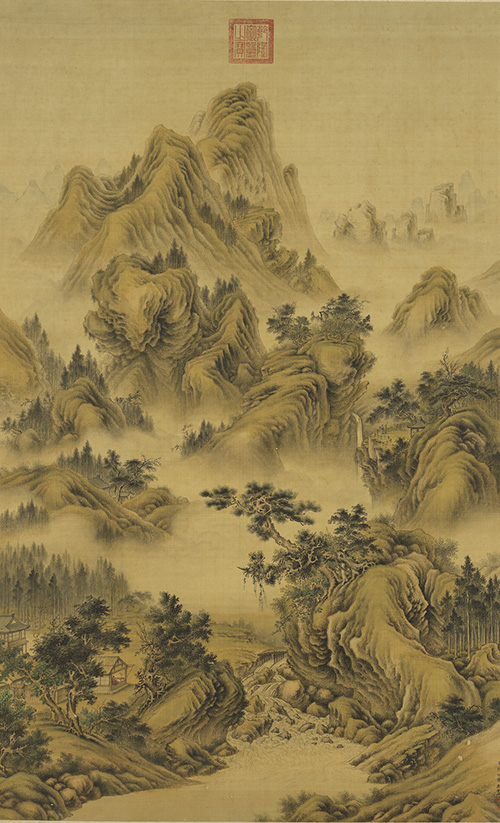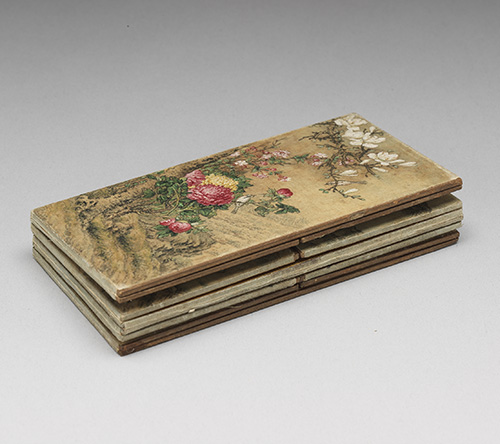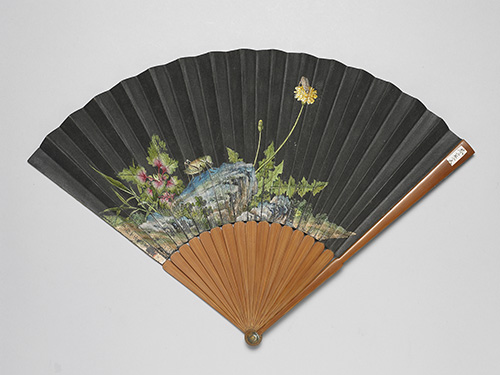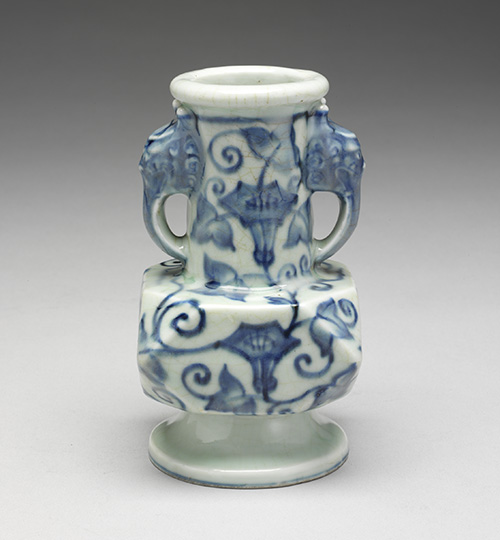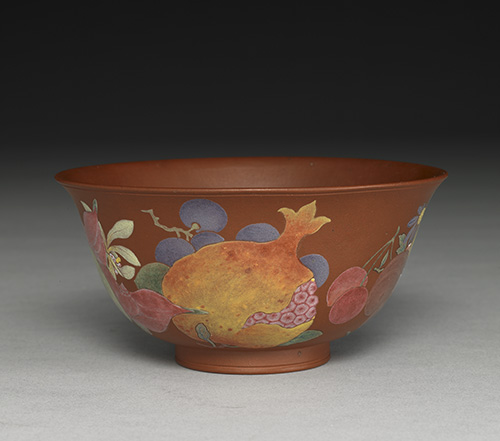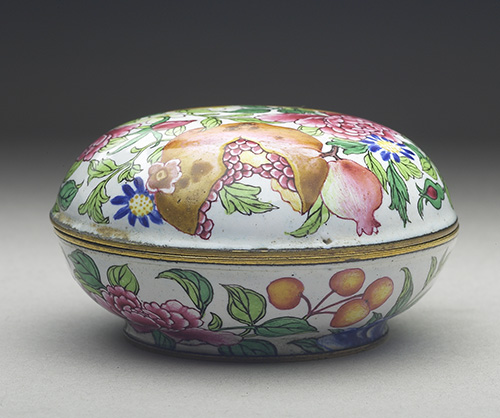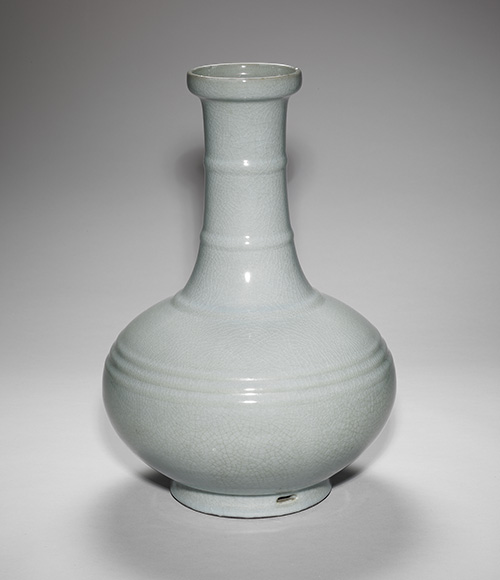Giuseppe Castiglione was born in the city of Milan, Italy, on July 19, 1688. He early began studying in a painting studio and then joined the Society of Jesus in Genoa as a novice at the age of 19 (1707). When the Jesuit mission in China passed along a request from the Qing dynasty court for a Western painter, Castiglione was chosen for his painting skills and left first for Portugal in 1709 in order to set sail. He did paintings in Lisbon until 1714, when he finally departed for China, arriving in Macao on August 20, 1715. This special exhibit includes two paintings in the collection of the Pio Istituto Martinez House for Elders in Genoa that have never been displayed for general audiences, offering a valuable glimpse at Castiglione's early study of European painting before going to China.
Very few of the works that Giuseppe Castiglione did during his first two decades in China survive, but his unique Sino-Western fusion already was highly developed by this time. On one hand, he molded Chinese subject matter with Western effects of light and shadow, depth for scenery, and structural perspective to create a new approach for Chinese representation. On the other, one could also say that he applied Western painting to Chinese formats, such as the fan. Painted porcelains on display from this period highlight the connection between Castiglione and the designs on them, presenting another facet of his contribution to different art forms for the Qing court.
Qing dynasty, Qianlong reign
Ceramic vase with reddish glaze
The bright and dazzling colors of this work with a unique glaze are perhaps mentioned in the Imperial Household Department Archives of the Qianlong reign as having previ-ously to refine a "Jun-ware porcelain surface." A similar vase is in the Beijing Palace Museum with brilliant colors and imperial poetry on the surface. The poetry symboliz-ing the emperor's mark, it brings to mind a very traditional form, the gall-bladder vase, the form perhaps echoing a handled Jun-ware vase painted in 1748 by Giuseppe Castiglione and representing a new style from redesigning.
Lang Shining (Giuseppe Castiglione, 1688-1766), Qing dynasty
Gathering of Auspicious Signs
- Hanging scroll, ink and colors on silk
- 173 x 86.1 cm
In this painting is a celadon vase with an arrangement of auspicious plants such as dual-blossom lotuses and stalks of rice with two ears of grain, plants that have been used in painting since the Song and Yuan dynasties to symbolize sagacious rule. Giuseppe Castiglione signed his name in Chinese with the "Song-script" style of Qing court publications and included a date equivalent to 1723, the first year of the Yongzheng emperor's reign, making it his earliest dated work. An elevated point of view has been taken, allowing the viewer to peer into the neck of the vessel. Castiglione also used white pigment to highlight the shine on the glaze, enhancing the volumetric effect of this porcelain vase. As for the plants, Castiglione excelled at rendering gradated areas of color to express three-dimensionality and shading with a single source of light. The coloring overall is exceptionally refined, making the motifs appear as if radiating with brightness. The painting is a masterful example of how Castiglione translated Chinese subject matter using Western techniques. The vase shown here also appears similar to an imitation Ru-ware celadon with linear patterns in the collection of the National Palace Museum.
Lang Shining (Giuseppe Castiglione, 1688-1766), Qing dynasty
Long-haired Dog Beneath Blossoms
- Hanging scroll, ink and colors on silk
- 123.2 x 61.9 cm
This painting depicts a small reddish-brown dog by a lake rock and peach blossoms in a garden setting. The blossoms come from an old peach tree growing in the lower right corner and extending out of the composition. Even a few new sprigs with blossoms emerge from the dense and gnarled roots, suggesting that the tree is still full of life. In the background is a large decorative lake rock, its convoluted form complementing that of the old tree. The rendering of the little dog is quite precise and endearing, a sense of motion inherent in it despite the stillness. In mid-step, its attention appears to have been caught by something outside the composition, making it stop to look back. Giuseppe Castiglione used extraordinary refinement and realistic techniques to portray the animal, conveying not only its three-dimensionality but also the luster of its hair. Capturing both the subtleties of formal likeness and inner spirit, the latter became an especially important criterion for determining the success of an animal painting. This work is undated, but according to Qing court archives, Castiglione made alterations in the second lunar month of Yongzheng's fifth year (1727) to a painting of a small "date-red" dog, most likely referring to the one here.
Lang Shining (Giuseppe Castiglione, 1688-1766), Qing dynasty
Landscape
- Hanging scroll, ink and colors on silk
- 143.2 x 89.1 cm
Clouds and mists linger amongst lush mountains rising layer upon layer in this painting with village houses, pavilions, and small bridges scattered here and there. Guseppe Castiglione has combined traditional methods of Chinese texturing and outlining with a technique akin to drawing, creating a completely new manner for the motifs. The tree leaves delicately range from dry to moist and light to dark, the coloring also luminous and beautifully refined. The faint mists increase the sense of remote distance for a sense of space in the painting.
In addition to his proficiency in various styles, Castiglione also dabbled in literati painting, learning from the court artist Tang Dai (1673-after 1752), who had studied under the Orthodox master Wang Yuanqi (1642-1715). The forms of the mountaintops, arrangement of the trees, texturing, and "moss dots" all reveal Castiglione's instruction from Tang Dai. In fact, the two were often ordered to collaborate, thereby placing Castiglione within the "Orthodox Style" of painting circles in the early Qing dynasty.
Lang Shining (Giuseppe Castiglione, 1688-1766), Qing dynasty
Chinese chess board painted with flowers of the four seasons
- Wood chessboard, ink and colors on silk
- 25.7 x 26 cm
This painting on silk was pasted on the back of a Chinese chess board. It represents various flowers of the four seasons in a waterside setting, such as the plum blossom, chrysanthemum, lotus, iris, crab apple, peony, bellflower, and begonia. All shown in bloom, the scene complemented by a pair of birds calling to each other. The board pieces are stackable, resulting in the painting being divided into sixteen units that can also serve as individual scenes, demonstrating the artist's skill in compositional arrangement. In the upper right corner is an inscription by Liang Shizheng (1697-1763), who wrote lines referring to the "complexity of beauty in the unity of four" and the "palindrome-like style of the brush," descriptions which befit the arrangement of the chessboard as well. Few of Giuseppe Castiglione's individual works are as small as this one. The dotted lines for texturing the slopes and the use of shadows for the lotus stems indicate that it probably represents his early style. However, Castiglione's signature does not include the character for "Your Servitor (chen)," indicating it was not for someone in the imperial family. The painting also shows that he worked in different formats.
Lang Shining (Giuseppe Castiglione, 1688-1766) and Zhang Ruo'ai (1713-1746), Qing dynasty
Folding fan with painting and calligraphy
- Folding fan, ink and colors on paper
- width: 28 cm
This is the only folding fan painting by Giuseppe Castiglione in the collection of the National Palace Museum. It is painted on dark ornamental paper, the coloring bright and beautiful in this intimate scene of flowers and insects. A katydid is on a rock as a bee has been attracted to a dandelion. The flower and its stem are all represented with a bright source of light, while the bodies of the insects are rendered with delicate washes of color. Even the fine hairs of the katydid and its feelers as well as its shadow cast on the rock are all faintly visible. The other side of the fan is a transcription by Zhang Ruo'ai of the second and third months from "Inquiring After Friends in the Twelve Months" by a Tang dynasty calligrapher, the contents seeming to echo the seasonal as-pects of the visual imagery. This painting, perhaps an early work by Castiglione, fea-tures a strong sense three-dimensionality for the objects in space, imbuing new meaning to this traditional Chinese subject of "grasses and insects." The folding fan, invented in East Asia, has here been illustrated by a Westerner, also adding special significance to this format.
Ming dynasty, Xuande reign
Faceted ceramic vase with morning-glory decoration in underglaze blue
Giuseppe Castiglione's "Vase of Flowers" is a painting that allows us to understand the popularity of Ming dynasty Xuande porcelains at the Qing court and how they were used to display flowers in that era. Scholars long ago recognized the vase in the painting as a porcelain from the Xuande reign, but which one did Castiglione actually portray? Compared with surviving examples in the National Palace Museum and the British Mu-seum, some differences can be found in the details. However, it is still not possible to verify which one is the porcelain depicted by Castiglione in the painting.
Qing dynasty, Kangxi reign
Tea bowl with flowers and fruit decoration in falangcai painted enamels on an Yixing-ware body
This work features delicate brushwork and washes to portray a pattern of fruits and flowers. Both the subject and brushwork are rarely seen in Chinese porcelains, so one cannot help but consider the possibility that the painter consulted a Western still-life painting. For example, a dish of fruit appears in Giuseppe Castiglione's "Auspicious Double-Fifth," suggesting that imagery from Western still-life painting had already en-tered the Qing court via missionaries. The fruit and flowers here, however, circle the wall of the bowl and not some splendid vessel, so even if the result of Western influence, it perhaps was only an imitation intended as an experiment in new decoration.
Qing dynasty, Kangxi reign
Metal-body vase with flowers and fruit decoration in painted enamels
The citron fruit on the cover of this vessel was completed using "boneless" wash meth-ods, the pigments gradated from light to dark. The skin is also stippled to suggest tex-ture, the two citron forming a clear contrast with the pattern of leaves and flowers in the surrounding area rendered using outlines. The technique of painting from life seen in the details here imperceptibly conveys Western elements in the art of painting in enamels.
Qing dynasty, Yongzheng reign
Celadon vase with linear decoration and imitation Ru-ware glaze
The glaze color of this vase is very light but intentionally darker towards the base, clear-ly reflecting how potters at the official kilns in the Yongzheng reign imitated Song dyn-asty porcelains but also integrated the techniques for Guan (Official) and Ru wares. Compared with the vase depicted in Giuseppe Castiglione's "Gathering of Auspicious Signs" from 1723, one can clearly see the porcelain in the painting as an imitation Guan ware from the Yongzheng reign.
Qing dynasty, Qianlong reign
Ceramic vase with reddish glaze
The bright and dazzling colors of this work with a unique glaze are perhaps mentioned in the Imperial Household Department Archives of the Qianlong reign as having previ-ously to refine a "Jun-ware porcelain surface." A similar vase is in the Beijing Palace Museum with brilliant colors and imperial poetry on the surface. The poetry symboliz-ing the emperor's mark, it brings to mind a very traditional form, the gall-bladder vase, the form perhaps echoing a handled Jun-ware vase painted in 1748 by Giuseppe Castiglione and representing a new style from redesigning.
Lang Shining (Giuseppe Castiglione, 1688-1766), Qing dynasty
Gathering of Auspicious Signs
- Hanging scroll, ink and colors on silk
- 173 x 86.1 cm
In this painting is a celadon vase with an arrangement of auspicious plants such as dual-blossom lotuses and stalks of rice with two ears of grain, plants that have been used in painting since the Song and Yuan dynasties to symbolize sagacious rule. Giuseppe Castiglione signed his name in Chinese with the "Song-script" style of Qing court publications and included a date equivalent to 1723, the first year of the Yongzheng emperor's reign, making it his earliest dated work. An elevated point of view has been taken, allowing the viewer to peer into the neck of the vessel. Castiglione also used white pigment to highlight the shine on the glaze, enhancing the volumetric effect of this porcelain vase. As for the plants, Castiglione excelled at rendering gradated areas of color to express three-dimensionality and shading with a single source of light. The coloring overall is exceptionally refined, making the motifs appear as if radiating with brightness. The painting is a masterful example of how Castiglione translated Chinese subject matter using Western techniques. The vase shown here also appears similar to an imitation Ru-ware celadon with linear patterns in the collection of the National Palace Museum.
